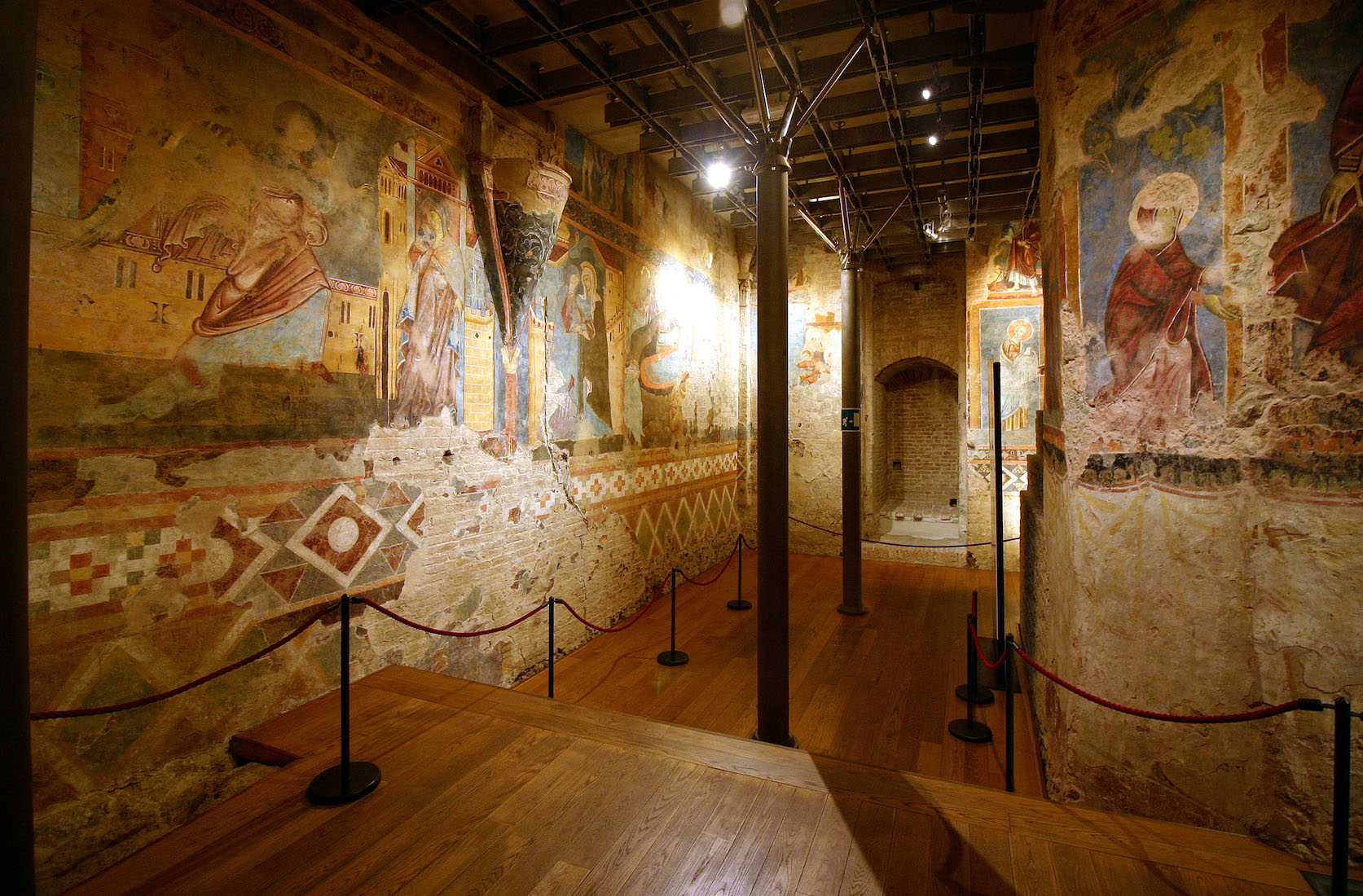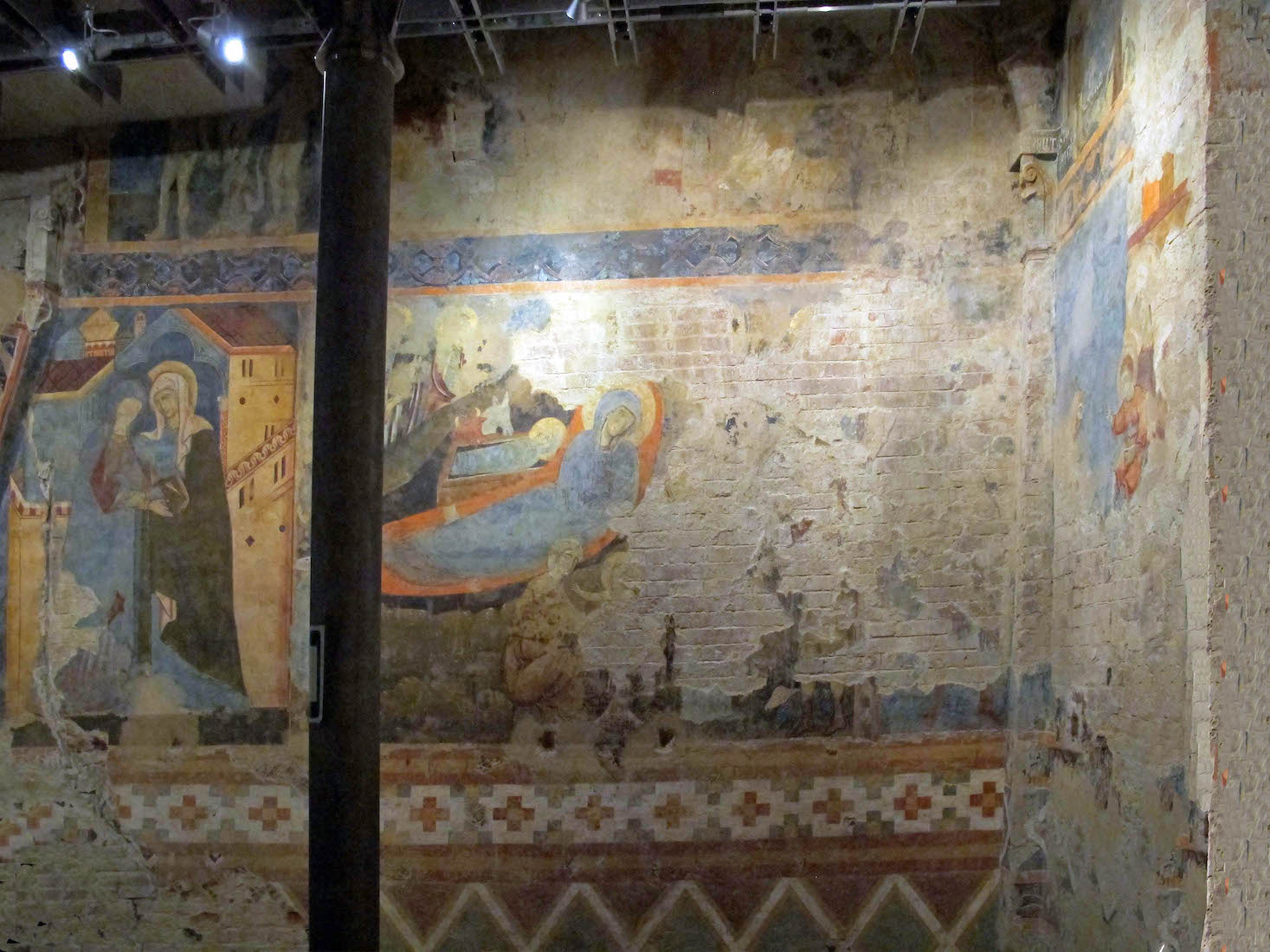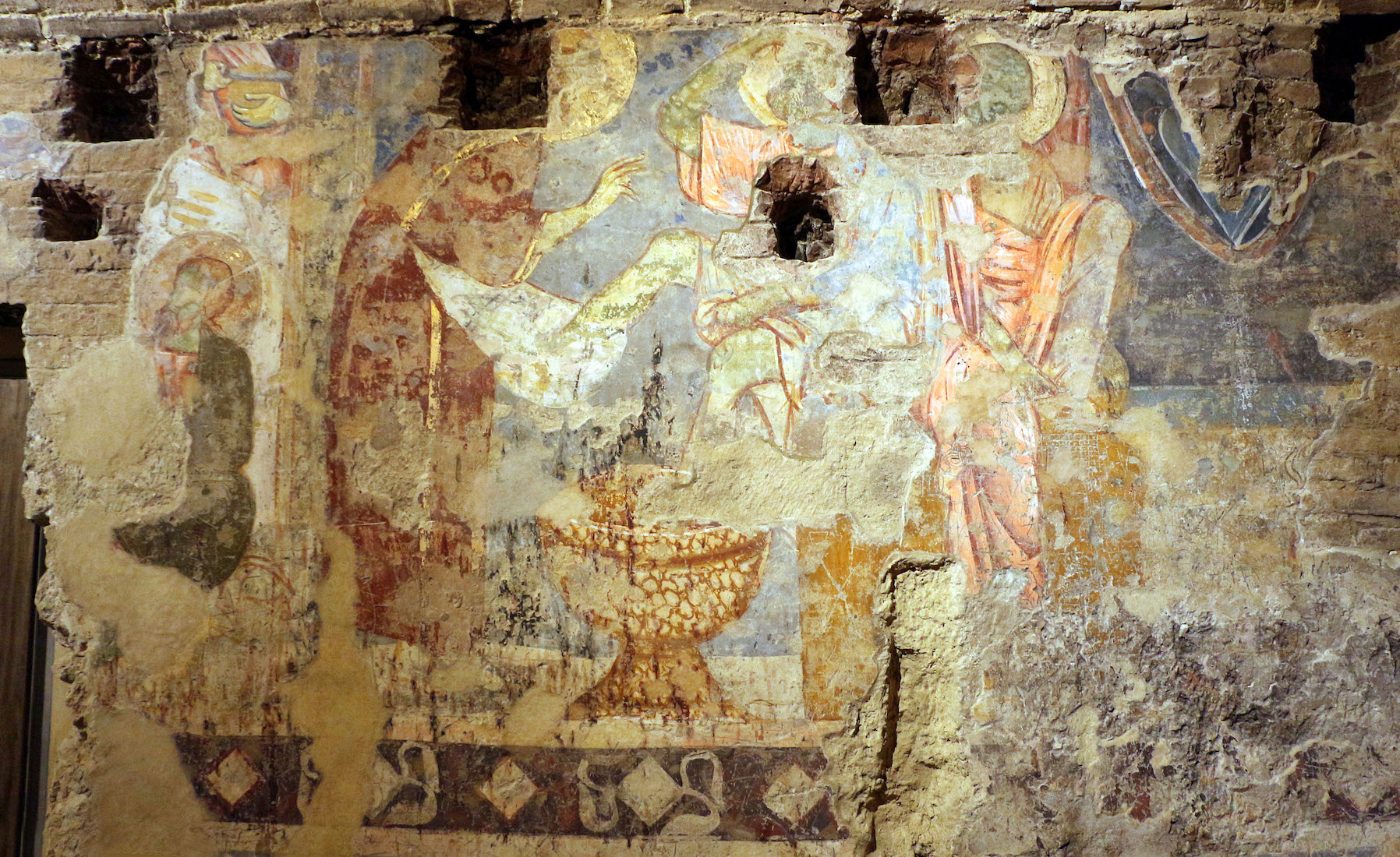
https://operaduomo.siena.it/en/sites/crypt/

Leaving the Cathedral we walk around the South side to the archway at the top of the downward flight of steps. Just here there is a side door which brings us down to the crypt. In 1999, work on the cathedral complex led to the accidental rediscovery beneath the church’s choir of a large space which had been sealed away and forgotten for about 650 years. This space is now called a ‘crypt’, although it was certainly not built as a crypt in the proper sense – a burial space beneath a building. its original purpose and relationship to the rest of the complex remains a matter of speculation. [Photo Credit: Opera Duomo Siena] INDEX
F2. THE FIRST FRESCOES JLBR

The crypt is spacious, with its walls lined with old frescoes. We enter and turn left, following along this wall. We shall follow the sequence at left, but we notice the fresco on the column at right where Mary Magdalene is about to touch Jesus after his resurrection, and is warned by Jesus not to touch him. More of this later ... .
F3. ANNUNCIATION AND VISITATION FB
The frescoes illustrate the Annunciation in which the angel Gabriel speaks to Mary, and the Visitation in which Mary goes to visit her cousin Elizabeth.
F4. NATIVITY FB
The next fresco shows the Nativity.
F5. ST JOSEPH ODS
Turning the corner we come to Joseph at the Presentation of the Christ Child in the Temple. The interesting painted column is not part of the story! [Photo Credit: Opera Duomo Siena]
F6. DREAM OF ST JOSEPH
On the other side of the decorated column is the Dream of St Joseph. At top left is an arm of the crucified Christ – part of a crucifix attached to this wall. [Photo Credit: Taken from Video]
F7. CRUCIFIX
This crucifix is attached to the North wall of the Southern pillar. [Photo Credit: Taken from Video]
F8. DREAM OF JOSEPH (II) FB
The second panel of the Dream of Joseph. It is difficult to know what it was about! Above it, and unfortunately out of view, is one of the few parts of the Old Testament cycle which is intact enough to read, Jacob sending Esau off to hunt before he blesses him (Genesis 37).
F9. VIEW ACROSS THE CRYPT
We return to stand at the corner near where we came in (Mary Magdalene about to touch the Risen Christ). There is a fresco directly ahead of us, and a wall of frescoes to our right.
F10. THE HOLY FAMILY JLBR
On this wall there is a charming picture of the Holy Family, on their way to Egypt to escape Herod’s massacre of the innocents, eating dates from a rather fanciful date-palm.This portrays a legend from an apocryphal gospel, also recorded in the Koran. According to the legend, the family stopped to rest under a date-palm, but it was too high for them to reach the fruits. The baby Jesus then performed his first miracle, by climbing down from the Virgin’s lap and ordering the palm-tree to bend down so that his mother could gather its fruits. Joseph is shown proudly pointing towards the miraculously bending palm-branch.
F11. THE BAPTISM OF CHRIST FB
The Baptism of Christ: it looks as though the fresco preceded the arch. The frescoes continue in order around the far end of the crypt where we have no overview.
F12. CHRIST WASHES THE FEET OF THE DISCIPLES FB
We read in scripture how before the Last Supper, Jesus washed the feet of the disciples.
F13. THE BETRAYAL OF JUDAS FB
Here is a brightly coloured representation of when Jesus was betrayed in the garden by the kiss of Judas
F14. VIEW ACROSS CRYPT
This view looks to the East wall which illustrates the events of Jesus’ life from the time of the crucifixion. [Photo Credit: Tripbucket]
F15. CRUCIFIXION FB
Jesus is shown upon the Cross with his mother Mary and the disciple John standing by.
F16. CRUCIFIXION EVENTS WC
Looking back along the East wall which depicts the events of the Crucifixion of Jesus. [Phot Credit: Joanbanjo]
F17. DEPOSITION FB
At left, the body of Jesus is removed from the Cross.
F18. LAMENTATION OF THE TOMB FB
The body of Jesus is laid in a tomb. Scripture tells us that the tomb was sealed with a large rock, and placed under guard by the authorities.
F19. THE HARROWING OF HELL WC
As we leave the crypt we pass by the final fresco – the Harrowing of Hell. In Christian theology, the ‘Harrowing of Hell’, is an Old English and Middle English term referring to the period of time between the Crucifixion of Jesus and his resurrection. In triumphant descent, Christ brought salvation to the souls held captive there since the beginning of the world. [Photo Credit: Joanbanjo]


















